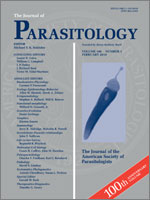Recent studies indicate that the northwestern Pacific Ocean is an ideal system in which to study and understand the roles of the Pleistocene sea-level fluctuations and ocean currents in shaping phylogeographic patterns of species, but most of these investigations have been concerned with vertebrates, and only a few have focused on invertebrates. In the present study, we examined the genetic population structure and historic demography of a platyhelminth species, Gotocotyla sawara (Monogenea, Gotocotylidae), a gill parasite of Japanese Spanish mackerel, Scomberomorus niphonius, along the coast of China. A fragment of the mitochondrial cytochrome oxidase I (COI) gene for 169 individuals and the internal transcribed spacers for 24 individuals were sequenced from specimens representing 8 populations of this parasite along the coast of China. High levels of COI haplotype diversity (0.9994) and nucleotide diversity (0.015805) were detected for G. sawara. Phylogenetic analysis revealed no phylogeographical pattern for G. sawara in the sample area. Analysis of molecular variance (AMOVA) revealed no significant differences at all hierarchical levels, and pairwise FST analysis demonstrated a high rate of gene flow of this parasite among different populations in coastal Chinese waters. Moreover, the exact test of differentiation supported the null hypothesis that G. sawara along the coast of China constitutes a panmictic population. Both neutrality tests and mismatch distribution revealed that G. sawara underwent population expansion in the late Pleistocene era. Recent range expansion after the last glacial maximum and insufficient time to attain migration-drift equilibrium may account in part for the lack of genetic structure in the geographic areas considered in this study. Dispersal of parasite eggs and larvae along ocean currents, coupled with the long-distance migrations of host fishes, could also be responsible for genetic homogeneity of this parasite. It is also possible that other hosts of this monogean, such as the ridged-eye flounder, Pleruonichthys cornutus, may contribute to the genetic mixing of Gotocotyla sawara populations.
How to translate text using browser tools
1 February 2014
Phylogeography and Demographic History of Gotocotyla sawara (Monogenea: Gotocotylidae) on Japanese Spanish Mackerel (Scomberomorus niphonius) Along the Coast of China
Su-Fen Shi,
Min Li,
Shuai Yan,
Ming Wang,
Chao-Ping Yang,
Zhao-Rong Lun,
Christopher L. Brown,
Ting-Bao Yang
ACCESS THE FULL ARTICLE

Journal of Parasitology
Vol. 100 • No. 1
February 2014
Vol. 100 • No. 1
February 2014




